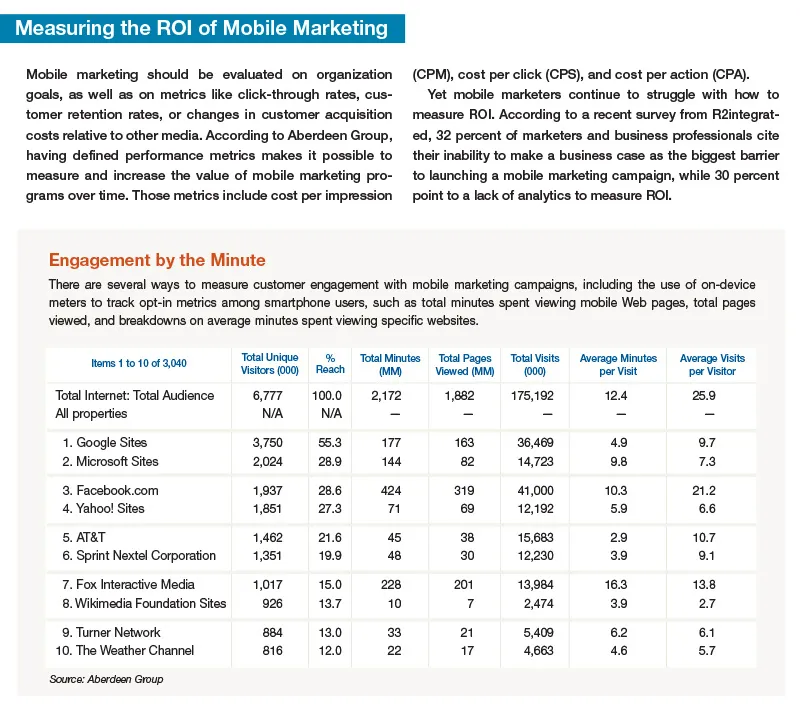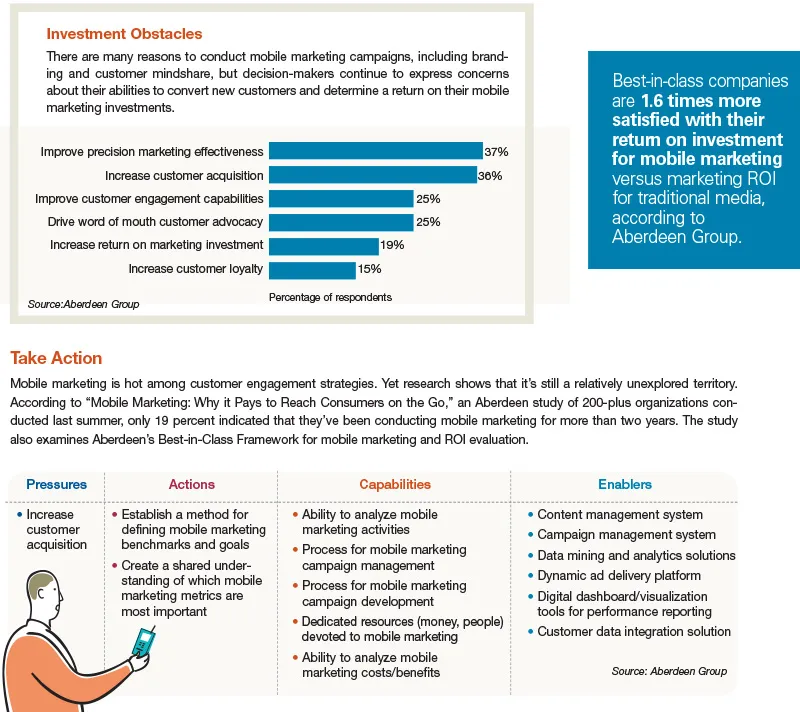Consumers have brands in their hip pocket—and marketers love it. Mobile marketing allows marketers to reach customers anytime, anywhere. And with more than 4 billion mobile phone users worldwide, there is ample opportunity for companies to tighten customer relationships through mobile marketing, messaging, and advertising campaigns. Not surprisingly, the North American mobile advertising market is expected to grow from $208 million in revenues for 2009 to roughly $1.5 billion by 2013, according to research from Parks Associates.
As enticing as mobile marketing may be, it’s a practice that’s still very much in its infancy. And it shows. Most of the marketers who use the mobile channel aren’t doing enough to measure results. According to a recent study conducted by Bango, a staggering 83 percent of practitioners don’t use any kind of analytic tools to measure the performance of their mobile campaigns.
According to industry observers, many mobile marketers are missing the big picture. There’s a significant push to create applications and campaigns specifically for users of smartphones such as Apple’s iPod and Google’s Android. Yet smartphones still represent just 15 percent of the 1.13 billion phones that were sold globally in 2009, according to research firm IDC.

When it comes to mobile marketing, convenience is king, says Don Peppers, founding partner of Peppers & Rogers Group. “It’s not marketing that will drive the customer experience with mobile marketing, but consumer convenience,” says Peppers. “[Marketing] will sit on the back end.”
In crafting their mobile marketing strategies, marketers need to pay heed to the limitations that consumers face with tiny screens, minute keypads, and spotty Web access. Applications that create additional work or cause connectivity problems will leave prospects feeling disenchanted.
Mobile marketing faces other challenges, particularly for telecoms, notes Mujdat Ayoguz, director at Peppers & Rogers Group. Mobile ads have to have an established value chain and telecoms need to be part of that value chain, Ayoguz says.
















